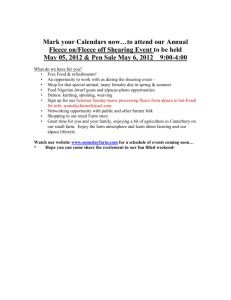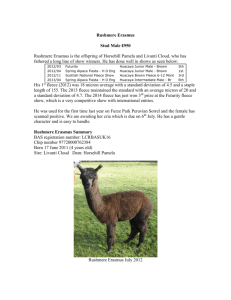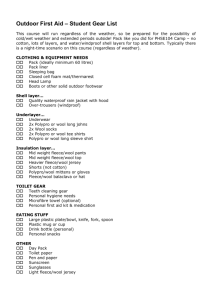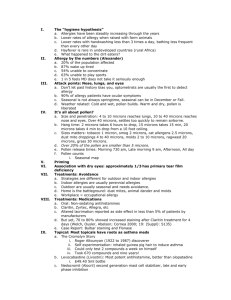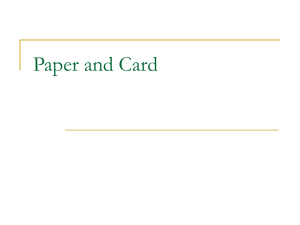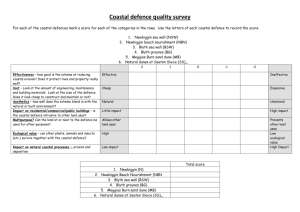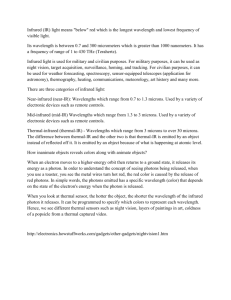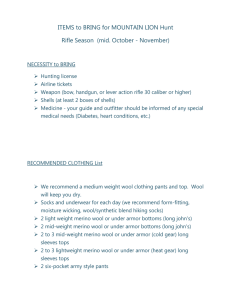Measuring wool fibre diameter
advertisement
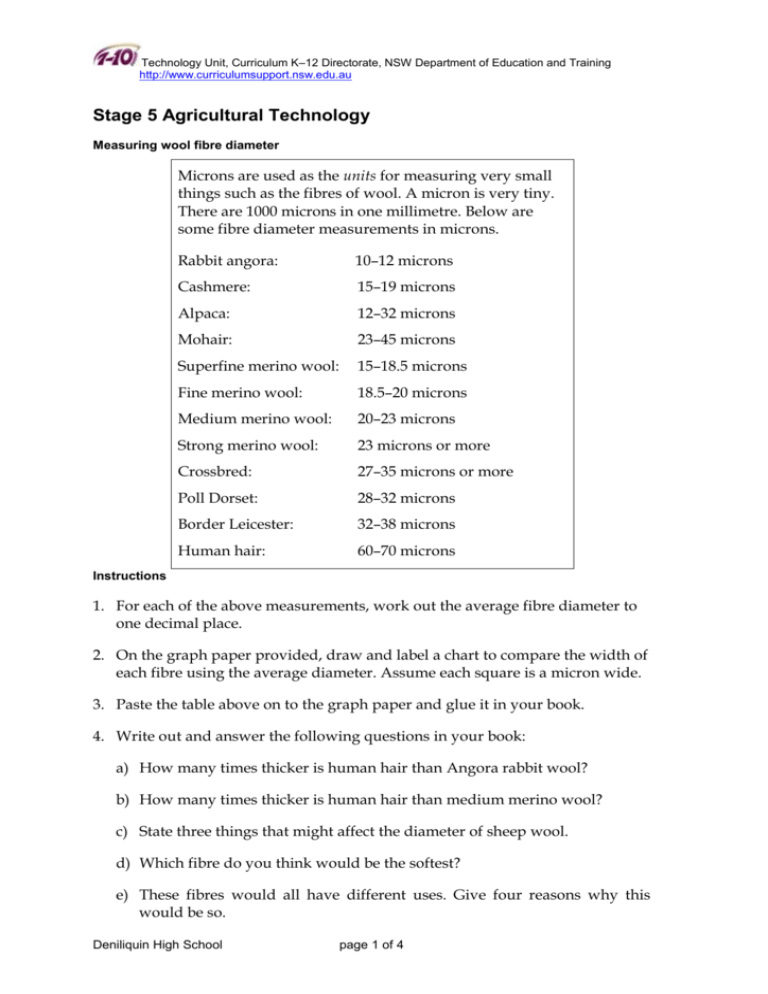
Technology Unit, Curriculum K–12 Directorate, NSW Department of Education and Training http://www.curriculumsupport.nsw.edu.au Stage 5 Agricultural Technology Measuring wool fibre diameter Microns are used as the units for measuring very small things such as the fibres of wool. A micron is very tiny. There are 1000 microns in one millimetre. Below are some fibre diameter measurements in microns. Rabbit angora: 10–12 microns Cashmere: 15–19 microns Alpaca: 12–32 microns Mohair: 23–45 microns Superfine merino wool: 15–18.5 microns Fine merino wool: 18.5–20 microns Medium merino wool: 20–23 microns Strong merino wool: 23 microns or more Crossbred: 27–35 microns or more Poll Dorset: 28–32 microns Border Leicester: 32–38 microns Human hair: 60–70 microns Instructions 1. For each of the above measurements, work out the average fibre diameter to one decimal place. 2. On the graph paper provided, draw and label a chart to compare the width of each fibre using the average diameter. Assume each square is a micron wide. 3. Paste the table above on to the graph paper and glue it in your book. 4. Write out and answer the following questions in your book: a) How many times thicker is human hair than Angora rabbit wool? b) How many times thicker is human hair than medium merino wool? c) State three things that might affect the diameter of sheep wool. d) Which fibre do you think would be the softest? e) These fibres would all have different uses. Give four reasons why this would be so. Deniliquin High School page 1 of 4 Technology Unit, Curriculum K–12 Directorate, NSW Department of Education and Training http://www.curriculumsupport.nsw.edu.au 5. Read the information below, it describes the type of wool, its fibre diameter, and the range of wool products — both clothes and other items — that can be produced. Wool from different parts of a sheep has different qualities, such as a finer or coarser fibre or a longer or shorter fibre. It therefore has different uses. The micron measurement plays the most important part in deciding what it will be used for. There is a very desirable range of diameters for a product (the micron range that is most commonly used for this product) and an acceptable micron range (the micron range that could be used for this product). Use the information from the tables to create a graph by shading the appropriate squares on the work sheet. The desirable micron range should be a darker colour and the acceptable micron range should be paler. An example is given. Record a key at the bottom of the worksheet. Apparel products (these are products that you wear) Garment description Wool description The micron range that is most commonly used for this product. Ultra fine knitwear Fleece and lambs wool 16 and finer Premium men’s and women’s suits Fleece and lambs wool 16 and finer Top quality accessories, e.g. scarves, wraps etc Fleece and lambs wool 16 and finer Men’s woven outerwear Fleece and good pieces 18–25 microns 16–32 microns Women’s woven outerwear Fleece and good pieces 18–24 microns 16–30 microns Worsted knitwear, e.g. suiting and fashion fabric Fleece 18–28 microns 16 microns to very coarse Woollen knitwear, e.g. jumpers Lambs, crutchings, bellies, locks, pieces 18–20 and 25–27 microns 16–28 microns Underwear Fleece 19–20 microns 16–24 microns Socks Fleece and pieces 24–29 microns 19–32 microns Hand knitting yarn Fleece and pieces 24–32 microns 19 microns to very coarse Deniliquin High School page 2 of 4 The micron range that could be used for this product, i.e. the minimum and maximum used. Technology Unit, Curriculum K–12 Directorate, NSW Department of Education and Training http://www.curriculumsupport.nsw.edu.au Non-apparel products Pressed felts Premium shorn fleece 24–29 microns Premium baby blankets Fleece and lambs wool 16 and finer Quilt fillings X-bred lambs, locks and crutchings 27–29 microns 23–33 microns Furnishings, e.g. sofas, chair covers, woven car seats, rugs etc. Fleece and pieces 28–32 microns 24–33 microns Carpets Fleece and pieces 32–33 microns 27 microns to very coarse Bedding underlays X-bred lambs, pieces & bellies 28–32 microns 22 microns to very coarse Blankets Lambs, locks & crutchings 20–33 microns 18–32 microns Deniliquin High School page 3 of 4 19–33 microns Technology Unit, Curriculum K–12 Directorate, NSW Department of Education and Training http://www.curriculumsupport.nsw.edu.au Create a graph to show the end uses of various wools and various fibre diameters. Apparel products Garment description Ultra fine knitwear Premium men’s and women’s suits Top quality accessories, e.g. scarves, wraps etc Men’s woven outerwear Women’s woven outerwear Worsted knitwear, e.g. suiting, fashion fabric Woollen knitwear, e.g. jumpers Wool description (microns) Finer than 15 15 Fleece and lambs wool Fleece and lambs wool Fleece and lambs wool Fleece and good pieces Fleece and good pieces Fleece Lambs, crutchings, bellies, locks, pieces Underwear Fleece Socks Fleece and pieces Hand knitting yarn Fleece and pieces Non-apparel products Pressed felts Premium baby blankets Quilt fillings Premium shorn fleece Fleece and lambs wool X-bred lambs, locks & crutchings Furnishings, e.g. sofas, chair covers, woven car seats etc. Fleece and pieces Carpets Fleece and pieces Bedding underlays Blankets Deniliquin High School X-bred lambs, pieces & bellies Lambs, locks and crutchings page 4 of 4 16 17 18 19 20 21 22 23 24 25 26 27 28 29 30 31 32 33 or coarser

